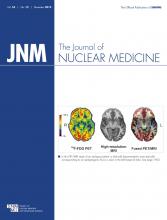REPLY: We appreciate your attention and interest regarding our work in the field of new PET-image–derived indices within the context of therapy response prediction and prognosis. Our recent article (1) was concerned with the physiologic reproducibility of such tumor-derived indices based on uptake heterogeneity features. The objective of the work was to provide support for the eventual introduction of these heterogeneity parameters into clinical use. The physiologic reproducibility of any image-derived index is indeed a necessary condition, as is a robust methodology for its calculation, along with standardization in terms of reconstruction and associated correction methodologies. Satisfying these conditions reduces the variance of such parameters and the associated reproducibility limits, allowing smaller parameter changes during treatment to become significant. This in turn can lead to response assessment earlier during the course of treatment and going forward, facilitating the prediction of response directly from baseline PET images (2). However, although a prerequisite, none of these conditions alone is sufficient or the only determinant in ensuring that any PET-image–derived parameter has an eventual impact within the context of therapy response. In addition to clinical research studies already performed (2,3), studies using the tumor heterogeneity parameters showing the best physiologic reproducibility and robustness are needed for different cancer models and treatment regimes to demonstrate whether these new PET-image–derived parameters will be of interest in clinical practice.
Footnotes
Published online Oct. 12, 2012.
- © 2012 by the Society of Nuclear Medicine and Molecular Imaging, Inc.







